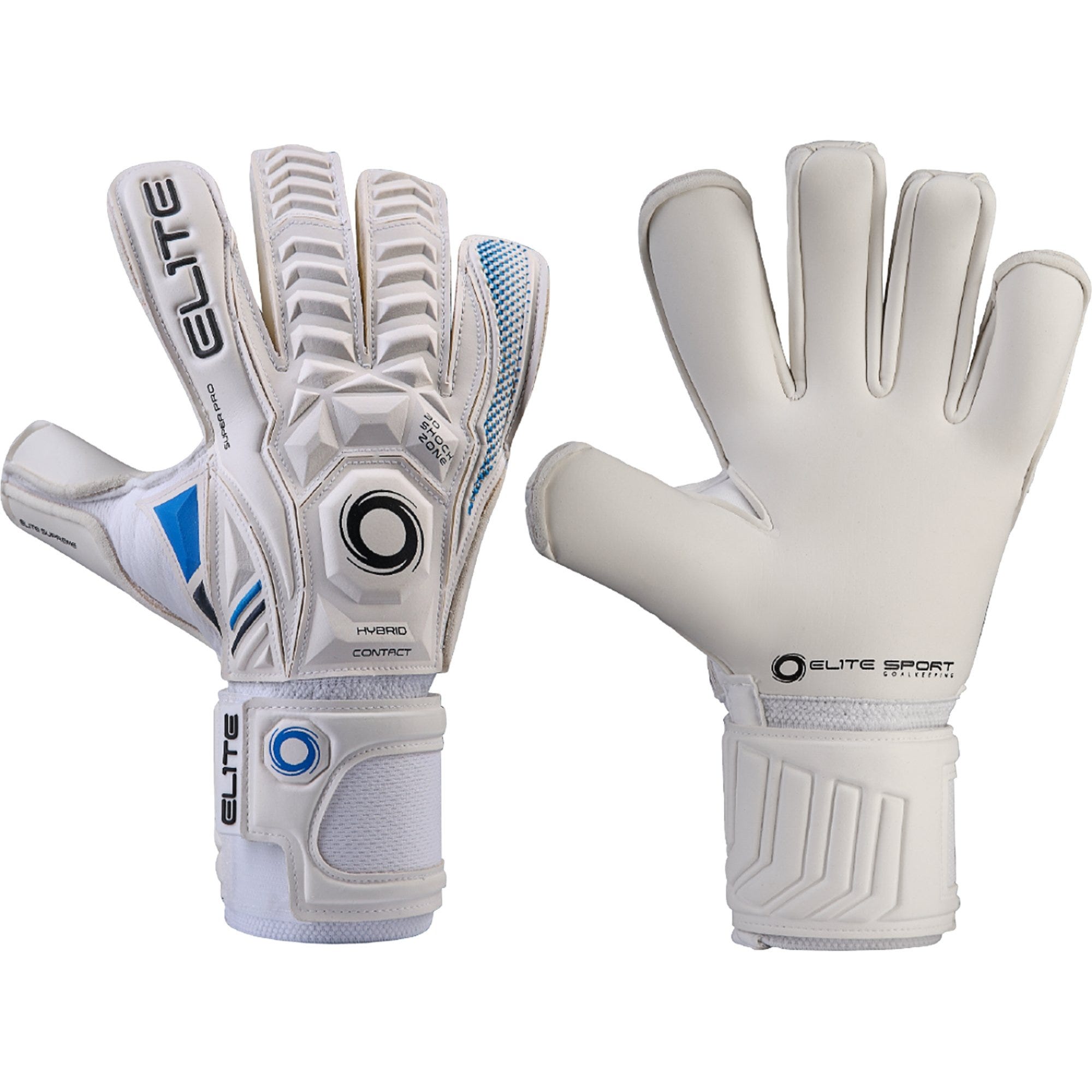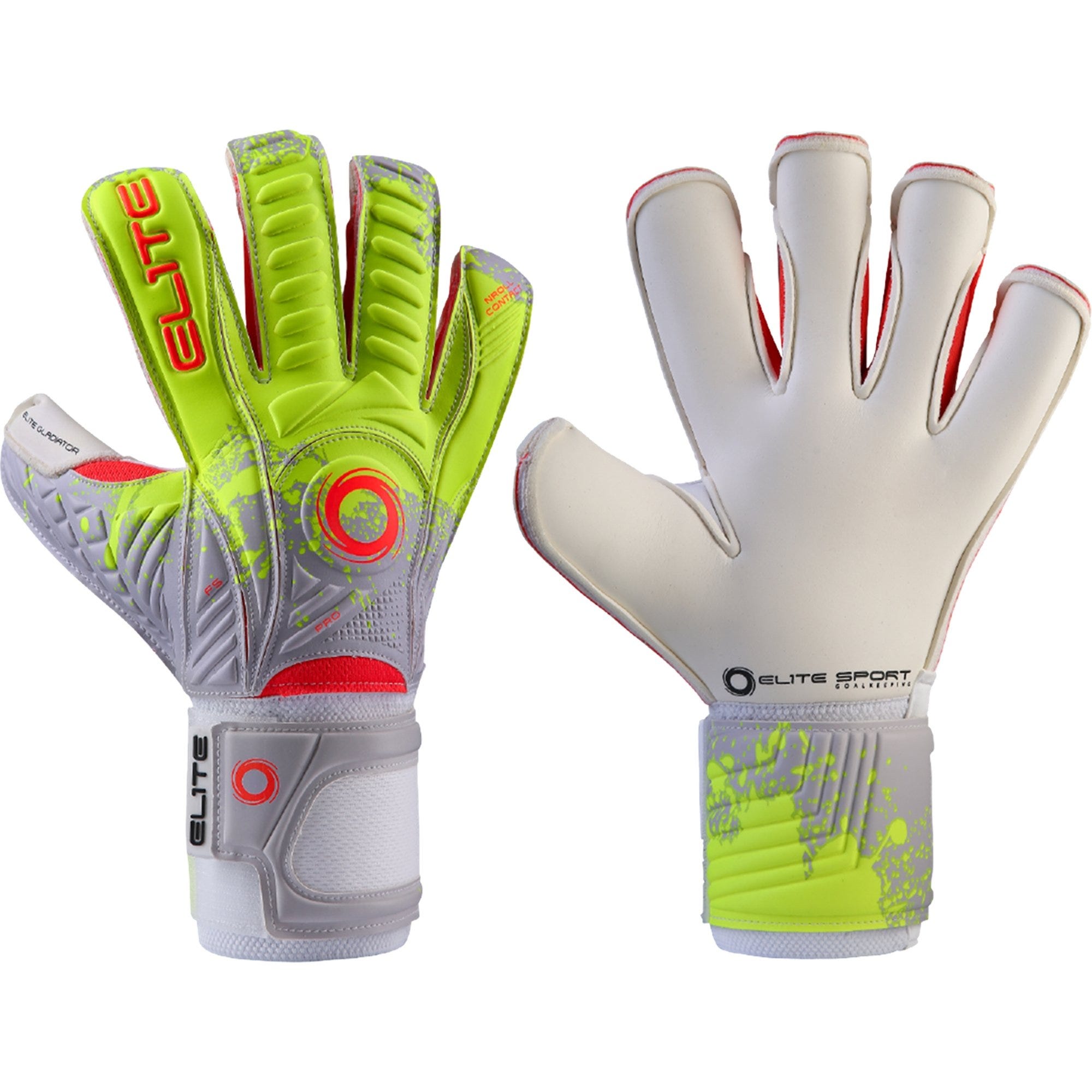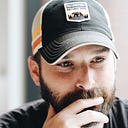Guide to Goalkeeper Gloves
How to choose the right goalkeeper glove for you
Note: a newer, more in-depth version of this post has been publish on The Soccer Parent Lifestyle blog. Check out the New Guide to Goalkeeper Gloves.
Choosing the right pair of goalie gloves can be confusing, especially for new goalkeepers (or parents of goalkeepers).
I’m going to break it all down for you in the following sections:
Brand Names
There are several good brand names to choose from, many of which you may never have heard of before. Since goalkeeping is a specialized position, there are niche brands that focus on (and have mastered) the art of making goalkeeper gloves.
Top brands
From my own personal experience of wearing several of these brands over the years as well as reading reviews online, the following brands seems to be the best.
- Uhlsport — one of the longest standing top goalkeeping brands on the market, and worn by the pros. They’re constantly improving their technology.
- Reusch—another big name in goalkeeper equipment, used by professionals for many years.
- Adidas — obviously a huge name in soccer with a great gloves that are worn by professionals.
- Nike—another big name in soccer. Early on, Nike gloves were subpar in my opinion. But over the years, they have greatly improved in quality, with many star players now wearing them.
- SP—(Soloporteros) a relatively new Spanish goalkeeping brand that makes high quality gloves worn by professionals.
- Elite Sport—one of the fastest growing goalkeeper-specific brands in Europe, and one of my personal favorites.
- One — a goalkeeping equipment specialist with high quality gloves.
- Sells—another goalkeeping equipment specialist company. While their gloves are top notch, I’m not a fan of their style.
- Puma—another big brand name in general, like Adidas, with high quality keeper gear.
- West Coast Goalkeeping—an American company that specializes in high quality goalkeeping gear. They make fantastic gloves.
Finger Cuts
A finger cut or “glove cut” is basically a style of how the glove material is stitched together. Each type of cut has its own advantages and disadvantages, and which one is better often just comes down to which fits and feels best when you wear them. It’s all preference.
There are 3 main finger cut types:
- Flat palm, traditional or positive
- Rolled
- Negative
Then there are hybrids that combine a couple of these cuts.
You may also find that there are other brand-specific cuts (and names), like “total flare”, but these are either too new to be widely adopted or just riffs off of hybrids of the 3 main cuts.

Flat palm, traditional or positive cut
The flat palm cut is the classic, traditional glove cut. It’s the original, and it’s probably the type of glove you’re used to seeing out at youth soccer fields or in sports equipment stores. This doesn’t make it lesser quality or not as good in any way either—it is still a popular and worthwhile cut, depending on your preference.
Features:
- Looser fit, with more room for wider fingers.
- Stitches on the outside of the latex.
- Flat palm from a single piece of latex.
- Finger gussets, sometimes with a more breathable material.
A positive cut is a modern spin on the flat palm, often with a lower profile and a negative stitched backhand.
You may also see them called “regular cut”.

Rolled cut
The rolled finger cut is a very popular cut with is named after the fact that the latex rolls or curves around the side of the fingers. This feature provides a lot of surface area for gripping the ball.
Features:
- Slightly more snug feeling than the flat palm cut.
- Often more foam and padding, making the glove feel bulkier.
- Stitches on the outside of the latex.
- Maximum latex surface area for a better grip.
- No finger gussets due to the rolled fingers.
The rolled cut goes by other names like “gun cut”, “surround cut” or “roll finger”.

Negative cut
The negative glove cut is also a popular choice due to its tighter fit and closer, more “true” feel to the ball. This tighter feel is achieved by moving the stitches inside the glove, hence the name “negative cut”. They are similar to the flat cut since they generally “flat” due its single piece of latex on the palm and gussets on the sides of the fingers.
Features:
- A snug, tighter fit for a better feel of the ball.
- Stitches on the inside of the glove.
- Flatter palm from a single piece of latex.
- Finger gussets, sometimes with a more breathable material.
The may also be called “inverted cut” or “inseam cut”.
Hybrids


Hybrid cuts are not a specific type of cut, but rather a combination of cuts. They can provide you with the best of each in a single glove.
For example, you can get a snug feel and breathable gussets on the middle fingers (negative cut) with larger surface areas on the index finger, little finger and thumb (rolled cut). Gussets are the mesh lining inside the fingers of the glove, which are meant to improve glove fit.
Some hybrids even provide the rolled cut only on the tips of the finger where you’re more likely to need it. These are often labeled as “negative roll”.
You may also come across a “wrapped thumb”, which is basically a rolled thumb.
My personal favorite is a hybrid with positive cut on the middle fingers and rolled on the outside fingers and thumb.
Backhand
The backhand describes the material used and the construction of the back of the glove. Some materials include latex foam for padding, knit materials for breathability, neoprene for a tighter more natural fit, or even finger protection spines (see next section below).
When it comes to latex backhands, gloves with thinner latex padding are often less expensive and lower in quality. Higher quality gloves tend to have thicker latex padding.
The construction of the backend mostly affects the goalkeeper’s comfort and his/her ability to punch the ball. In some cases, layers of silicon or embossed latex are added to aid in a goalkeepers control of his/her punches. Comfort of the backhand is often related to the glove cut (see above under Glove Cut) as well.

Finger Protection
Gloves with finger protection or “fingersaves” have plastic spines that run along the back of the fingers in the backhand of the glove. These spines are either sewn in permanently or removable in some gloves, and their purpose is to restrict movement to one direction (i.e. bend fingers forward, not backward). This is supposed to limit the potential for hyperextension or broken fingers.
This concept was originally introduced by Adidas in the 90s with their Fingersave glove, which why these types of gloves are often called “fingersaves”.
Whether or not to choose finger protection, though, may be up for some debate depending on your preference, your age, your worry for injury (as a parent of a goalkeeper), or as an expert with an opinion on the proper way to train goalkeepers.
So, I think it’s best to give some general pros and cons with the addition of my own experience and opinion as a goalkeeper (and goalkeeping coach). Then, you decide what you want to do with this info.
Pros
- Restricts movement backward, with the goal to limit finger injuries.
- Added protection from backhand injuries as well, like getting stepped on (though rare).
- Added confidence when catching the ball.
Cons
- Restricts movement forwards, making it hard to develop a proper fist to punch the ball away.
- Limits a players ability to develop a feel for catching the ball properly, and often leads into some lazy catches.
- Finger strength will not improve naturally during play or training.
- Not 100% guarantee fingers won’t get injured.
Advice
- Young goalkeepers under the age of 12 do not need finger saves—the shots they face just are not hard enough for worry.
- Having spines limits a young goalkeeper’s ability to develop finger strength and proper, safe catching habits—and this is the most important thing for them to develop as goalkeepers.
- If you’re coming off of a finger injury, it’s more than likely best to have the extra support of spines.
My experience
I’ve played goalkeeper since I was at least nine; often with crappy gloves. I never had a real, quality pair of gloves until I was in high school, and even those pairs didn’t have finger protection. I also had plenty of sports injuries, but never once broke my finger playing goalkeeper. Nor did I wear fingersaves.
That is until I was in my twenties.
I was coaching U16 boys at the time. During a fun shooting drill in practice, I was playing keeper and dove to save a rather typical shot. It was hard, but nothing out of the ordinary. My form was fine and my fingers were flat, but somehow the ball just grabbed the tip of my middle finger and snapped it back. Just a random, freak accident.
I wear gloves with finger protection now. But, I’ve developed the proper techniques and strength, and I had that finger injury that partly shook my confidence to this day. They’re restrictive, but I’m ok with that.
With that, you do you. Go with what you’re comfortable with, but always put working on proper catching technique first before relying on some plastic spines to prevent injury.

Latex Durability and Grip
The quality of the latex determines the quality of the grip, and this is by far the most important factor in choosing the right glove for you.
More expensive gloves, generally have higher quality grip due to higher quality latex. The latex-injected foam in the palm of a goalkeeper glove provides both a supple padding as well as a stickiness that aids in grip. As gloves are used, the latex palm begins to wear away. So, there’s typically a tradeoff between this grip and its durability. The better, more supple grip is often less durable, and vice versa.
Grip rules of thumb:
- Softer latex = better grip
- Harder latex = better durability
- Thicker latex = better padding
- Thinner latex = better ball control
The palm surface can be smooth, dimpled or textured. Smooth surfaces are better for matches and provide the best grip, in my opinion. Textured or dimpled surfaces are more durable and better for training.
Match vs. training gloves
Match and training gloves fall into the same general rules of thumb for grip.
- Match gloves are typically more expensive and have a better grip, due to high quality latex. This means they are more fragile and susceptible to abrasions.
- Training gloves are typically less expensive and have better durability, with a lower rated grip. The added durability comes from a dense, more synthetic palm.
- In my opinion, training gloves are better for younger, beginner goalkeepers due to their affordability (i.e. fingers grow), level of play (i.e. weaker shots), need for durability, and need to develop finger strength.
How the pitch surface affects grip
There’s another general rule of thumb for obtaining the optimal grip depending on the conditions of the pitch surface (or weather): your gloves should be the opposite of the pitch.
- Wet pitch surface requires dry latex—gently pat gloves dry on a towel. Do not rub them!
- Dry pitch surface requires moist latex—lightly wet palms with clean drinking water (try not to spit on them).

Wrist Closures
There are a few main types of closures for securing goalkeeper gloves around your hands. The most common is an elastic wrist cuff with a Velcro strap.
- Wrist cuffs can be elastic or non-elastic. Elastic cuffs are pulled on like a snug sock, while non-elastic have a slit in the side to allow them to be pulled on easily.
- Wrist straps can be half-wrap, full-wrap (once around), or double-wrap (sometimes called “bandage”).
- Some gloves, like the Nike Mercurial Touch glove, do not have wrist straps and rely on a longer flexible wrist cuff to secure the glove.
- Most of the cheaper gloves (especially for younger players) have a non-elastic, half-wrap closure.
Choosing the right closure is simply a matter of personal preference. In some cases, goalkeepers find the double-wrapped elastic straps to be too tight and restrictive while others like the snug fit (like me).
Glove Sizing
The best way to size goalkeeper gloves is to try them on. However, this isn’t always possible, especially with the need to order gloves online. So where do you start?
Measuring
In lieu of trying on gloves, you can often determine the right glove size by measuring your hand. Here’s how:
- Using a soft tape measure (or sewing measuring tape) to measure the length of you hand, starting with the base of your palm (where it meets your wrist) up to the tip of your longest finger (typically your middle finger). Write this measurement down.
- Now measure the circumference of your palm, just below your knuckles and excluding your thumb. Write this measurement down.
Choose the largest of the two measurements, round up to the nearest inch, and add one (1). This number is usually** your glove size.
For instance, if the length of your hand measures 7.5" and the circumference of your palm is 8.25", then you would choose the 8.25", round up to 9", and then add 1 — giving you a glove size of 10.
** However, this isn’t a perfect science, which is why trying on gloves is the preferred method. This magic formula begins to break down at the extremes (i.e. smallest youth hands and largest adult hands). When in doubt, go to a local sports store, try on some gloves to get a rough sizing, and then order the gloves you want online.
Things to consider
- Finger tip length — there should be about a half inch (or length of a finger nail) of room left in the finger tips.
- Width—if the gloves are too wide, they will slide, shift or bunch in the palm. This will affect your ability to catch properly. If the gloves are too tight, they will be uncomfortable or too tight to properly flex your hand.
How to take care of your gloves
After spending a lot of money on goalkeeper gloves, the last thing you’d want is for them to not last. Taking good care of your gloves can help ensure they do last as long as possible.
It’s important, however, to note that latex is a soft material and will naturally deteriorate and show wear through use. In fact, by its very nature, latex will “sacrifice” small bits of its surface during more abrasive or high impact saves.
Treat your gloves with care by
- Avoiding excess or unneeded abrasion. For example, do not use your palms to get up during training (use your fists) and don’t allow the palms of your gloves to touch rough surfaces, like Velcro.
- Washing your gloves frequently to remove dirt. Use warm water without soap. Do not use a scrubber or rub the palms together; instead gently massage them. Do not use heat to dry your gloves; allow them to air dry. I typically hang them using the strap (or sewn in tab) over a towel or sink to drip dry.
- Storing your gloves in a cool, temperature-controlled place. Do not leave them in a hot car or in direct sunlight.
- Having more than one pair of gloves. Purchase training gloves for training, and save your match quality gloves for games. Doing this will ensure your expensive match gloves last longer.
- Dampening your gloves with water before each use—especially on drier days. Read more about how the pitch affects grip above.
Questions or comments
If you have any questions, comments or other tips, please feel free to ask or share them with me!
And if you found my post helpful, I’d love for you to let me know in the comments or through a “clap” or two. Cheers!
